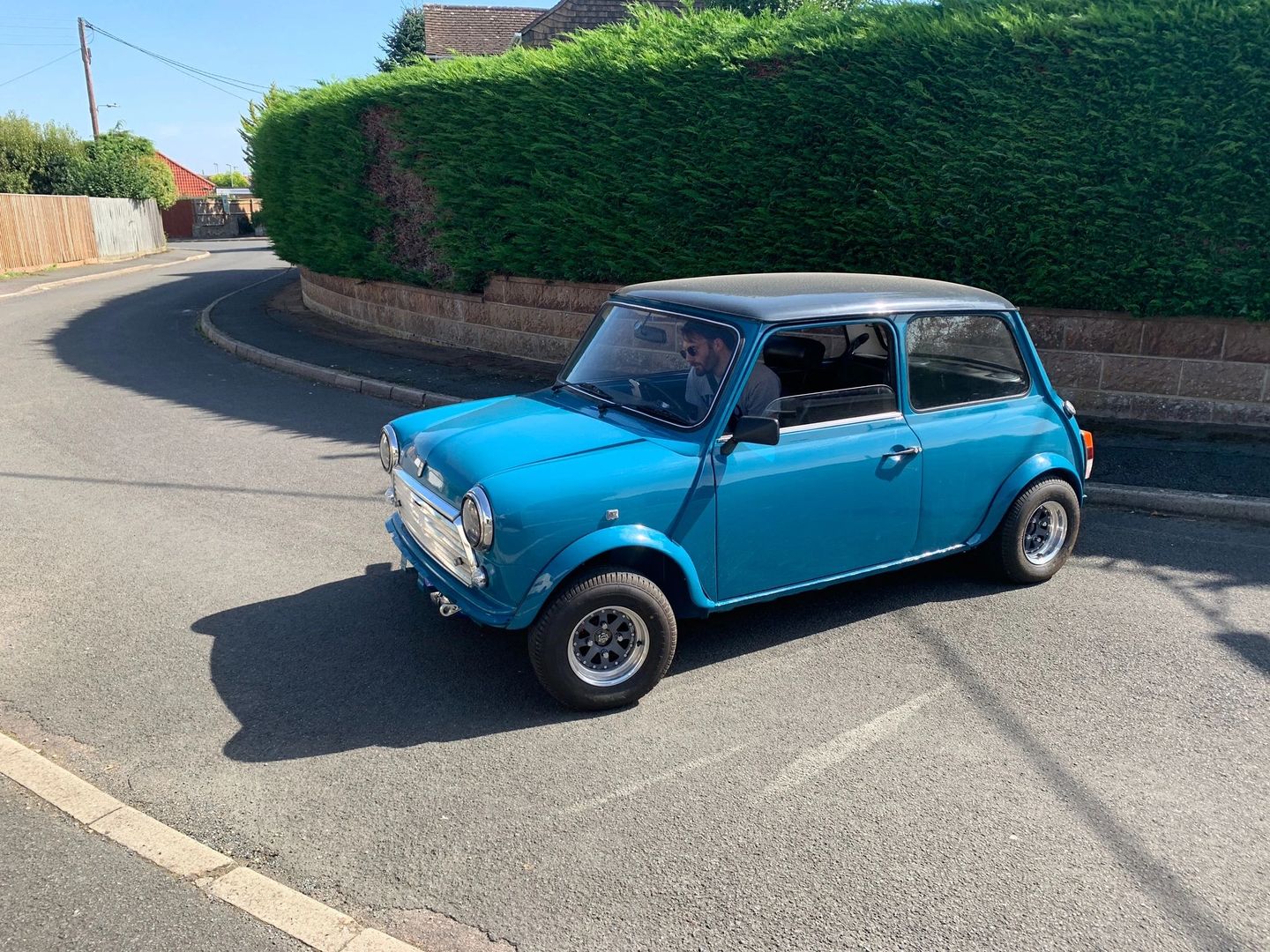| Page: |
| Home > A-Series EFI / Injection > Runner length | |||||||
|
8604 Posts Member #: 573 Formerly Axel Podland |
27th Sep, 2009 at 12:28:18pm
Anyone got any formulas to calculate the optimum runner length?
Saul Bellow - "A great deal of intelligence can be invested in ignorance when the need for illusion is deep."
|
||||||
|
8604 Posts Member #: 573 Formerly Axel Podland |
27th Sep, 2009 at 02:05:28pm
I found this site:
Saul Bellow - "A great deal of intelligence can be invested in ignorance when the need for illusion is deep."
|
||||||
|
Forum Mod 10979 Posts Member #: 17 ***16*** SouthPark, Colorado |
27th Sep, 2009 at 03:00:54pm
I spoke with someone who knew their stuff after showing them my triple-injector manifold design a few years back (which had 12" runners) and he reckoned the design wouldn't work too well (after he understood why there were three large injectors being used). Instead, he believed a very short (read 2" or so) tapered runner is needed to minimise the siamesed port effects.
Edited by TurboDave16V on 27th Sep, 2009. On 17th Nov, 2014 Tom Fenton said:
Sorry to say My Herpes are no better Ready to feel Ancient ??? This is 26 years old as of 2022 https://youtu.be/YQQokcoOzeY |
||||||
 11046 Posts Member #: 965 Post Whore Preston On The Brook |
27th Sep, 2009 at 03:12:15pm
tapered which way? On 26th Oct, 2004 TurboDave16v said:
Is it A-Series only? I think it should be... So when some joey comes on here about how his 16v turbo vauxhall is great compared to ours, he can be given the 'bird'... On 26th Oct, 2004 Tom Fenton said:
Yep I agree with TD........ |
||||||
|
8604 Posts Member #: 573 Formerly Axel Podland |
27th Sep, 2009 at 03:53:17pm
That would be tapered at the inlet to reduce the pulse energy. Reducing the pulse energy by openening up the inlet and running a very short runner would just minimise the pulse effect and shift it right up the revs out of the operating range.
Saul Bellow - "A great deal of intelligence can be invested in ignorance when the need for illusion is deep."
|
||||||
|
1267 Posts Member #: 831 Post Whore Montreal, Canada |
27th Sep, 2009 at 04:03:11pm
Here is a power point presentation which goes through some of the theory: http://not2fast.com/gasflow/Lecture08/Lect...v3_document.htm.
|
||||||
 (2)[/url] by [url=https://www.flickr.com/photos/150672766@N03/]Rod Sugden[/url], on Fli) 5988 Posts Member #: 2024 Formally Retired Rural Suffolk |
27th Sep, 2009 at 04:19:32pm
Where do you define the runner finishing and the port starting, especially on the siamese setup ???
Edited by Rod S on 27th Sep, 2009. Schrödinger's cat - so which one am I ??? |
||||||
|
8604 Posts Member #: 573 Formerly Axel Podland |
27th Sep, 2009 at 05:07:23pm
On 27th Sep, 2009 jbelanger said:
Here is a power point presentation which goes through some of the theory: http://not2fast.com/gasflow/Lecture08/Lect...v3_document.htm. Jean Interesting that the presentation ends at Vizards rule of thumb equations which gave me the 300-350mm starting point above. Saul Bellow - "A great deal of intelligence can be invested in ignorance when the need for illusion is deep."
|
||||||
|
8604 Posts Member #: 573 Formerly Axel Podland |
27th Sep, 2009 at 05:10:30pm
On 27th Sep, 2009 Rod S said:
Where do you define the runner finishing and the port starting, especially on the siamese setup ??? From your openning statement you say the manifold face, but why specifically there ??? I started talking about runner length of the manifold as that is the part that I can adjust. We need to add the port length. The total length of the port and runner is from the inlet valve back to the entry into the runner. Saul Bellow - "A great deal of intelligence can be invested in ignorance when the need for illusion is deep."
|
||||||
|
Forum Mod 10979 Posts Member #: 17 ***16*** SouthPark, Colorado |
27th Sep, 2009 at 06:44:59pm
The info I gave above is assuming turbo stuff BTW - including a plenum of reasonably large volume. On 17th Nov, 2014 Tom Fenton said:
Sorry to say My Herpes are no better Ready to feel Ancient ??? This is 26 years old as of 2022 https://youtu.be/YQQokcoOzeY |
||||||
|
8604 Posts Member #: 573 Formerly Axel Podland |
27th Sep, 2009 at 07:32:17pm
On 27th Sep, 2009 TurboDave said:
The info I gave above is assuming turbo stuff BTW - including a plenum of reasonably large volume. I'm using the same size plenum as with the 998 Turbo, about 1600cc volume. It's a bit large for the 998 and probably contributes to the lean tip-in I experience if I stomp on the throttle from idle, particularly when it is cold. I more or less tuned it out once the engine is up to temperature. Saul Bellow - "A great deal of intelligence can be invested in ignorance when the need for illusion is deep."
|
||||||
|
8604 Posts Member #: 573 Formerly Axel Podland |
21st Nov, 2010 at 05:13:45pm
Dragging this up again.
Saul Bellow - "A great deal of intelligence can be invested in ignorance when the need for illusion is deep."
|
||||||
|
1267 Posts Member #: 831 Post Whore Montreal, Canada |
21st Nov, 2010 at 07:21:17pm
I would think that you'd run into drivability issues at some point due to the volume of the runners.
Edited by jbelanger on 21st Nov, 2010. |
||||||
 1137 Posts Member #: 1450 Post Whore Near Paris - France |
21st Nov, 2010 at 07:22:12pm
What about building a set of runner extenders and check ?
Rusty by nature
On 23rd Jun, 2008 paul wiginton said:
They said "That sounds rough mate." I said "Cheers it cost me a fortune to make it sound like that!" |
||||||
|
8604 Posts Member #: 573 Formerly Axel Podland |
22nd Nov, 2010 at 12:39:14pm
My existing manifold has a runner length of around 240mm. On both the 998 and the 1275 it seems to provide a lot of torque off boost.
Saul Bellow - "A great deal of intelligence can be invested in ignorance when the need for illusion is deep."
|
||||||
 774 Posts Member #: 6724 Post Whore Wootton Bassett |
22nd Nov, 2010 at 07:11:44pm
Interestingly I've been doing some modelling of runner length in Ricardo Wave these last couple of weeks.
|
||||||
|
8604 Posts Member #: 573 Formerly Axel Podland |
22nd Nov, 2010 at 07:57:05pm
Great stuff.
Saul Bellow - "A great deal of intelligence can be invested in ignorance when the need for illusion is deep."
|
||||||
 774 Posts Member #: 6724 Post Whore Wootton Bassett |
22nd Nov, 2010 at 10:34:43pm
Paul: Sounds fair enough.
|
||||||
|
8604 Posts Member #: 573 Formerly Axel Podland |
23rd Nov, 2010 at 06:06:08pm
That will be very interesting.
Saul Bellow - "A great deal of intelligence can be invested in ignorance when the need for illusion is deep."
|
||||||
 2909 Posts Member #: 83 Post Whore Glasgow, Scotland |
23rd Nov, 2010 at 07:21:33pm
v quick post as in a rush but : -
turbo 16v k-series 11.9@118.9 :)
|
||||||
 1137 Posts Member #: 1450 Post Whore Near Paris - France |
23rd Nov, 2010 at 08:25:57pm
Am I right assuming the wave tuning is not that sensible on a boosted application ?
Rusty by nature
On 23rd Jun, 2008 paul wiginton said:
They said "That sounds rough mate." I said "Cheers it cost me a fortune to make it sound like that!" |
||||||
|
8604 Posts Member #: 573 Formerly Axel Podland |
23rd Nov, 2010 at 08:42:27pm
On 23rd Nov, 2010 Advantage said:
Am I right assuming the wave tuning is not that sensible on a boosted application ? Probably not on the exhaust side, but certainly of benefit on the inlet, in my opinion. Saul Bellow - "A great deal of intelligence can be invested in ignorance when the need for illusion is deep."
|
||||||
 774 Posts Member #: 6724 Post Whore Wootton Bassett |
23rd Nov, 2010 at 09:16:45pm
On 23rd Nov, 2010 Paul S said:
That will be very interesting. I've just been reading up on Helmholtz, but I still dont get the reasonance to pulse relationship. Yeah i'm trying to make sure i'm correctly understanding it. Have to give a presentation about it on Thurs so reading up now. Here's some useful info: http://www.sciencedirect.com/science?_ob=A...bc&searchtype=a |
||||||
|
8604 Posts Member #: 573 Formerly Axel Podland |
23rd Nov, 2010 at 09:18:30pm
I just found some basic explanation in Wikipedia:
Saul Bellow - "A great deal of intelligence can be invested in ignorance when the need for illusion is deep."
|
||||||
|
8604 Posts Member #: 573 Formerly Axel Podland |
23rd Nov, 2010 at 09:37:15pm
A lot of the early work on this was carried out by H.W.Engleman.
Edited by Paul S on 23rd Nov, 2010. Saul Bellow - "A great deal of intelligence can be invested in ignorance when the need for illusion is deep."
|
||||||
| Home > A-Series EFI / Injection > Runner length | |||||||
|
|||||||
| Page: |





